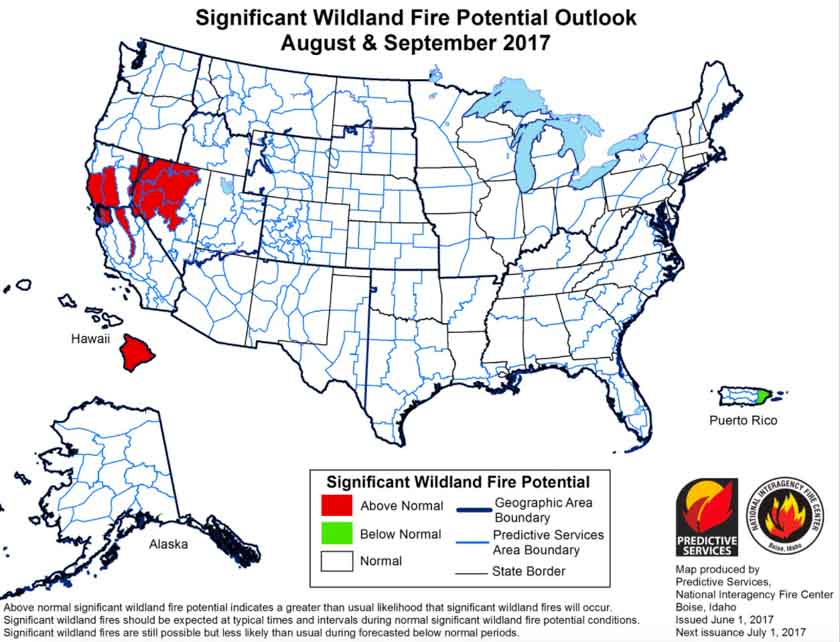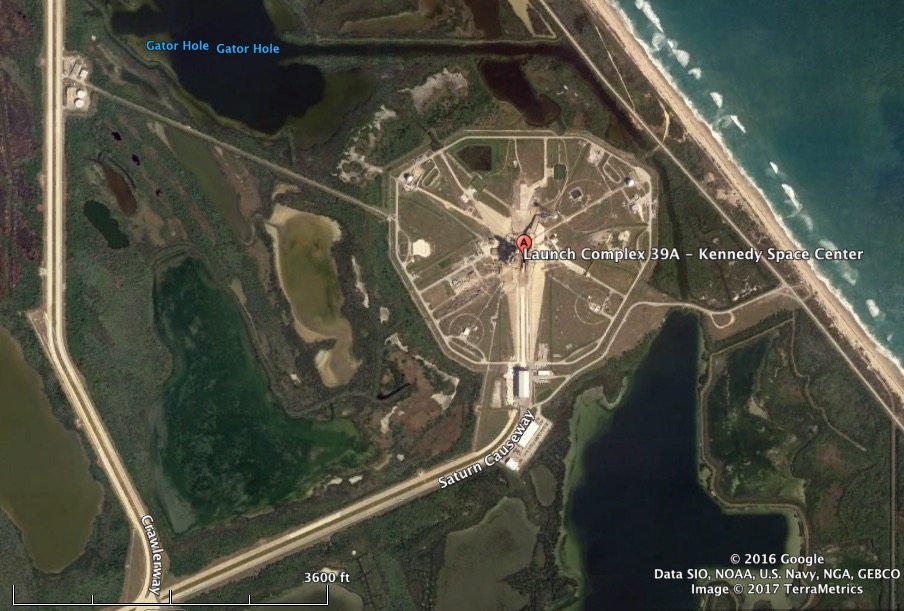On June 1 the Predictive Services section at the National Interagency Fire Center issued their Wildland Fire Potential Outlook for June through September. The data represents the cumulative forecasts of the ten Geographic Area Predictive Services Units and the National Predictive Services Unit.
If it is accurate it looks like firefighters could be busy at times in Arizona, California, and Nevada, but not so much in the rest of the Western U.S.
Below are:
- the highlights of their report;
- NIFC’s graphical outlooks for June through September;
- the Drought Monitor, and;
- NOAA’s long range temperature and precipitation forecasts.
****
“Florida and Georgia experienced slight relief during the latter half of May as moderately wet systems produced widespread precipitation in both states. Activity across the southwest including Southern California began to increase toward month’s end as the region began to enter its core fire season. Nationally, the acres burned were above average at the end of May largely due to the fire activity that occurred in early March across the southern Great Plains where more than a million acres burned. The number of fires may be a more reflective number this year and remains below average for 2017.
Above normal precipitation and soil moisture is leading to a robust green-up across the West. Overall cooler than average temperatures and a heavy snowpack have led to slower than normal melting of the mountain snowpack in nearly all locations across the West. This should lead to a delayed start to the fire season in the higher elevations which may, in turn lead to a compressed season.
Above normal large fire potential will continue across southeastern Georgia and Florida into mid-June before the cumulative effects of precipitation events begin to take hold. Below Normal potential is expected across most of the remainder of the southeast through July before returning to Normal for August and September. Recent dry conditions across the southwest will lead to Above Normal potential across southeastern Arizona and Southern California. Below Normal to Normal large fire potential is also expected in the a majority of the higher elevations across the West in June and July.
July and August may be periods of concern. Above Normal potential is expected across the western portion of the Great Basin and across the middle elevations in California in July and August after the abundant grass crop cures. Fire activity will be mostly driven by short term weather events. Looking north, Alaska appears to be transitioning into a normal fire season for June and July with late summer rains ending the season across the interior in August. Extended dry conditions on the west side of the big island in Hawaii will lead to Above Normal potential that should last into September.”
Continue reading “Wildfire potential June through September”













